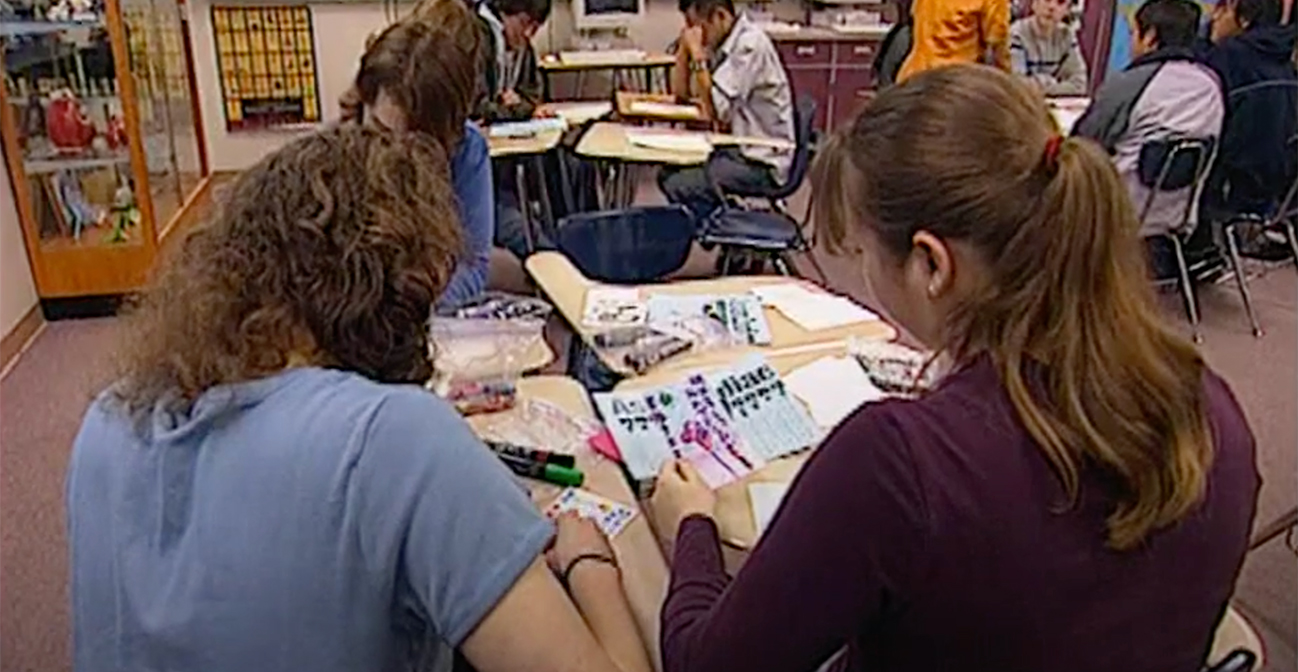Join us for conversations that inspire, recognize, and encourage innovation and best practices in the education profession.
Available on Apple Podcasts, Spotify, Google Podcasts, and more.

CLASSROOM AT A GLANCE
Teacher
Yo Azama
2012 ACTFL Teacher of the Year
Language
Japanese III-IV
Grades
10-12
School
North Salinas High School, Salinas, California
Lesson Date
May 14
Class Size
16
Schedule
Block schedule, 100 minutes every day for one semester
In this lesson, students learn about the regions and tourist destinations of Japan. Working first as a whole class and then in pairs, students use familiar and new vocabulary to discuss Japanese regions and landmarks. Next, they write questions and answers for a Jeopardy-style game about Japan, then play the game. As a culminating project, students create a travel brochure and begin planning a promotional video to attract visitors to Japan.
Communication: Interpersonal, Presentational
Cultures: Practices, Products
Connections: Making Connections
backward planning
In backward planning, also called backward design, the teacher plans a unit or lesson by first identifying the desired end task or product, then working in reverse to identify the prerequisite learning tasks and benchmark assessments.
kanji
Used in one of the three Japanese writing systems, kanji are the characters drawn from the Chinese writing system. Approximately 2,000 kanji, many with multiple meanings, are needed to read materials written for adults in Japanese.
Reflect on Your Practice
As you reflect on these questions, write down your responses or discuss them as a group.
Watch Other Videos
Watch other videos in the Teaching Foreign Languages K-12 library for more examples of teaching methodologies like those you’ve just seen. Note: All videos in this series are subtitled in English.
Creating Travel Advice (Spanish) shows students preparing to advise travelers from abroad about tourist sites in the U.S., and Performing With Confidence (French) features students participating in a competitive game that reviews vocabulary.
Put It Into Practice
Try these ideas in your classroom. Where it’s not already evident, reflect on how to adapt an idea that targets one performance range for application to other performance ranges.
World-Readiness Standards for Learning Languages
The World-Readiness Standards for Learning Languages create a roadmap to guide learners to develop competence to communicate effectively and interact with cultural understanding. This lesson correlates to the following Standards:
Interpersonal Communication
Presentational Communication
Relating Cultural Practices to Perspectives
Relating Cultural Products to Perspectives
Making Connections
Lesson Materials
Video Project Guidelines (PDF, 37 K)
Instructions that students used to create their Japanese tourism videos
Video Project Rubric (PDF, 22 K)
Mr. Azama’s rubric for grading the student video projects
Curriculum References
California Department of Education Foreign Language Curriculum Frameworks
Yo Azama’s Additional Resources
Web Resources:
The Japan Foundation
Web site for the Foundation’s Los Angeles office, which includes information about local arts and culture activities, language teaching resources, Web links, and more
Web Japan: Japan Atlas
Provides visual resources on a variety of topics related to the nature, traditions, and current social trends of Japan
Web Japan: Regions & Cities
Information about the regions and cities of Japan
Japan National Tourism Organization
Information for people traveling to Japan (Available in Chinese, English, French, German, Japanese, and Korean)
American Association of Teachers of Japanese
The national organization’s Web site
Yahoo! Japan
The Japanese-language version of the popular search engine